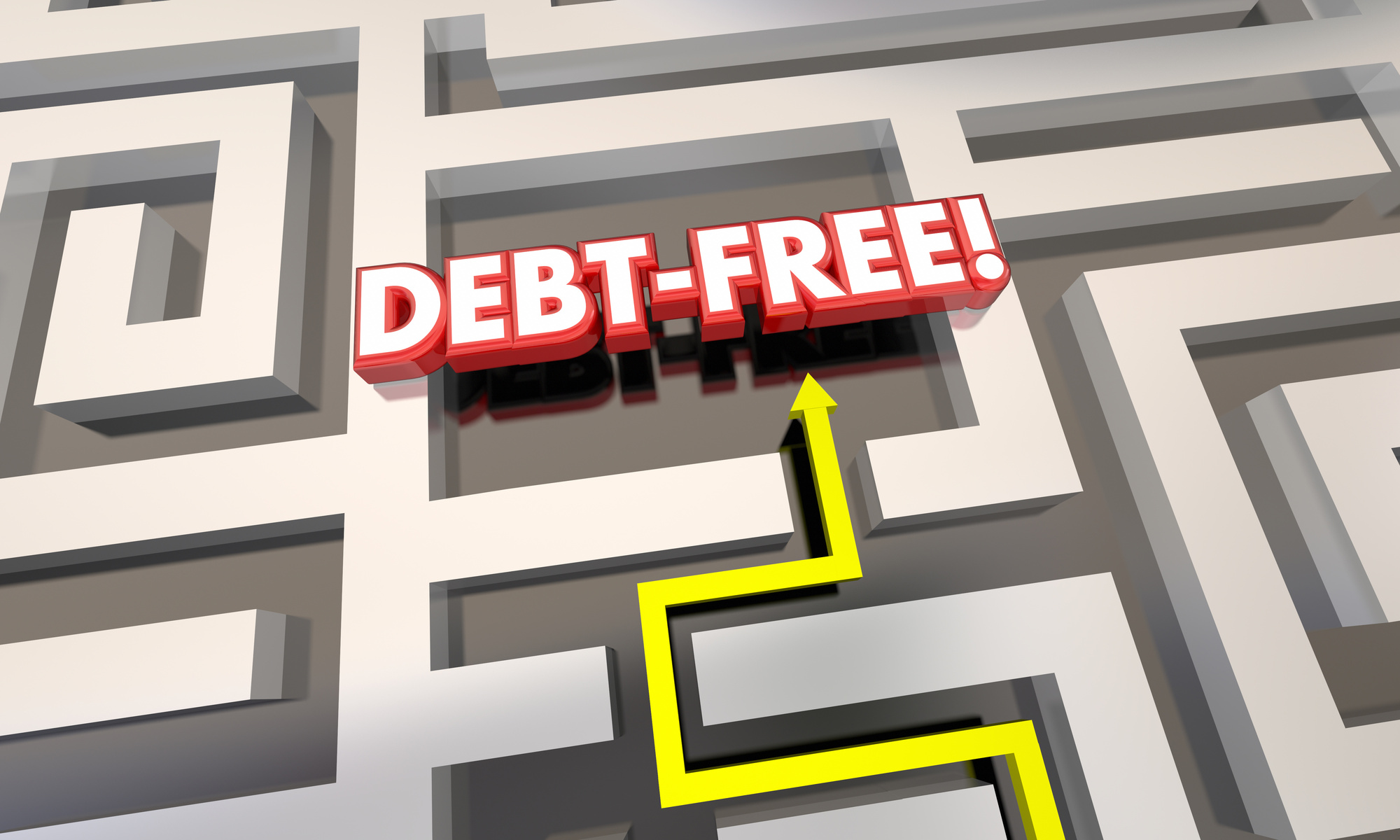Are you one of the millions of Americans struggling to pay off debt?
If so, it can feel like an impossible mountain to climb. Between the money you owe, sky-high interest rates, and a sinking credit score, it might seem as though you’re destined to be in the red forever.
However, there are plenty of tools and resources that can help you get your debt paid off the right way. The best part? They’re legitimate, easy to find, and simple to use.
Today, we’re sharing a comprehensive guide to becoming debt-free, one smart step at a time.
Understanding the Burden of Debt
While the term “debt” tends to have a negative connotation, it’s important to understand that not all forms of debt are bad. For instance, if you consistently make on-time payments toward your home mortgage loan for 30 years, it can help build up your credit score.
However, large amounts of mishandled debt can have the opposite effect. Even if you’re able to stay on top of your monthly obligation, the fees and interest rates associated with most payments can make even the smallest ones feel overwhelming.
If you’re unable to keep up with your payments and get your spending under control, your credit score can be the first aspect to suffer. Over time, you could also end up spending a substantial amount more on the objects you purchased due to the interest that builds up over time.
Whether your debt burden is tiny or tremendous, you don’t have to allow it to overwhelm or define you. Your journey toward paying off your debt can start today, and we have the resources to help.
Starting This Important Journey
There are myriad reasons why you might be in debt. These can include medical emergencies, unexpected expenses, overspending, job loss, and more. Although it can feel like an ostracizing journey, you’re far from alone.
In fact, according to research, 80% of Americans are currently carrying some form of debt. Yet, while it might be common, getting caught up in the chains of debt doesn’t have to be your reality.
It pays to know the right strategies to use when you’re ready to start tackling your debt once and for all. Otherwise, it’s easy to get stuck in a never-ending cycle of late fees, soaring interest rates, and missed payments.
As you begin this journey, you’ll find that there are various tools and programs that claim to offer a fast pass out of debt. However, the reality is that there is no substitute for smart, patient planning.
Read on to learn five key steps that can help make your debt repayment strategy as successful as possible.
1. Understand Your Debt More Closely
Especially if you’re dealing with various forms of debt, you might not understand the exact magnitude of your overall obligation.
It doesn’t take long for that pile of bills on the table to quickly grow taller and taller. Soon, you’re just adding new mail to the pile, all while stressing more and more about how you’ll the payments required.
If this sounds like you, it’s smart to start by assembling all of your payments in one place. While it might seem overwhelming to sort through all of the numbers, you need a clear, concrete picture of how much you owe.
How simple or elaborate you go with this step is up to you.
If you want to keep track of things manually, you can list all of your debts in an Excel spreadsheet. Or, you can find mobile apps that will do most of the legwork for you, including ones that link all of your credit cards in one place.
2. List Your Key Data Points
Paying off your debt requires more than simply listing all of your individual totals. While that’s a great place to start, it’s important not to stop there.
Beside each debt, you’ll need to list a few key pieces of information. These include:
- When each payment is due
- The associated interest rate for each payment
- The minimum monthly payment required
If your debts are listed as rows on a spreadsheet, list the points above as columns. This way, you’ll only have to update one cell at a time as you make changes.
3. Strategize Your Repayment Plan
Now that you have the big picture under control, you’re ready to focus on the actionable details.
If you’re wondering how to pay your bills, you’ll need a strategy in place. In general, there are two different approaches you can take to pay off your debt. Let’s take a look at each one in greater detail.
Debt Snowball Approach
Under the debt snowball approach, you’ll begin tackling your debt by paying off your smallest amount first.
Every month, you’ll still make your minimum payments on all of your other debts. However, any excess you have left over will go toward chipping away at these minor amounts.
Once you pay off each debt, the money you were allocating toward those will be used to pay off the next-smallest amount. You’ll repeat this process until all of your debts are eventually eliminated.
Though it can take some time to build up to the bigger payments, the motivating factor behind this approach is largely psychological. Financial experts explain that the pride and personal satisfaction you feel from eliminating that low-hanging fruit will propel you onward and encourage you to keep going.
Debt Avalanche Approach
Under the debt avalanche approach, you’ll still continue to make your minimum monthly payments. However, rather than allocating your excess funds to pay off your debts in ascending order, you’ll pay off the ones with the largest interest rates first.
Once you pay off that debt, you’ll begin paying back the one with the second-largest rate, and so forth.
Deciding which approach to choose is a highly personal decision and there is no right or wrong answer. Moreover, the route your take might look different from your neighbor’s, and that’s OK. You didn’t get into debt the same way, so you don’t need to follow the same repayment roadmap.
If you’re the kind of person who loves checking off your to-do list every day and takes pride in small accomplishments, you might be more willing to try the debt snowball method.
However, keep in mind that this approach ultimately takes longer than the debt avalanche method. While the latter can take more time to get started, once you eliminate that highest-rate debt, you’re able to move more quickly through the others.
4. Rein in Your Spending
Of course, any debt repayment plan is going to include cutting back on unnecessary expenditures. Yet, you can’t exactly do so until you know what those expenditures include.
This is where a simple budget comes into play. Again, you can get as simple or tech-savvy with this step as you want to. There are many online programs and databases that allow you to enter all of your income and expenses, then receive a detailed budget to follow.
If you’d rather take a more manual approach, a spreadsheet works fine here, too. If you already have one created for your list of debts, you can just create another tab in the same spreadsheet. This way, all of your repayment data can stay in one place.
For a more official form, you can also download a free budget template from the Federal Trade Commission. This budget includes easy-to-fill sections that allow you to divide your various expenses into different categories, including:
- Housing expenses
- Transportation expenses
- Food expenses
- Health expenses
- Personal expenses
- Family expenses
- Other expenses
Whichever resource you use, you’ll need to have a few important pieces of information in place before you get started. These include:
- A list of all of your sources of monthly income
- A list of all of your fixed expenses
- A list of all of your variable expenses
Fixed Versus Variable Expenses
Your budget should include lines for both your fixed and variable expenses.
In short, your fixed expenses are those that don’t change from month to month. The amount stays the same and your payment is always due on the same day. Common examples include:
- Monthly loan expenses
- Mortgage or rent expenses
- Insurance expenses
On the other hand, variable expenses will change from month to month. These are expenses that you know you’ll accrue, but the amount doesn’t stay consistent. These might include:
- Grocery store expenses
- Utility expenses
- Household repair and maintenance expenses
- Entertainment expenses
You can’t include one category on your budget and leave out the other. While it might be difficult to list an exact amount next to each variable expense, look at your past payment history to estimate those figures.
For instance, if you eat out three times per week and spend roughly $20 every time you do so, that’s $60 a week. Multiply that by four and you can estimate that you spend around $240 a month on restaurant meal expenses.
5. Make Lifestyle Changes and Choices
Though it can be difficult to cut back on your fixed expenses, you’ll have a little more wiggle room with your variable ones. This is where you’ll need to examine the necessity of each one.
Do you really need to eat out three times a week? Or, can you start shopping with coupons at the grocery store and make more meals at home? What about those magazine subscriptions, weekly retail hauls, or high-priced fancy coffee drinks?
While it might feel restrictive to cut these things out of your life, realize that it’s an important part of the process. You’ll be hard-pressed to get on top of your debt if you’re still splurging on $5 lattes every other day and coming home with armfuls of new clothes on a regular basis.
Once you repay your debt and regain your financial footing, you might be able to reintroduce some of those little luxuries on a less frequent basis. For example, you can commit to buying your expensive latte only once a week.
6. Set Mini Goals
Are you looking at a hefty amount of debt that feels impossible to surmount? For instance, you might feel in over your head with student loans or medical payments.
In this case, neither the debt snowball nor the debt avalanche approach can offer much encouragement. This is where a little perspective can make a big difference.
Rather than setting your sights on 100% debt repayment, break that major goal into several minor ones that are more reachable in the near future. Then, make sure to celebrate every time you meet an important milestone!
For example, you might treat yourself to a dessert out on the town when you save your first $1,000. Or, you can host a family movie night when you make a series of five consecutive, on-time payments toward your loan.
The point is to encourage you to stay the course. If you’re only focused on the big-picture goal at the ultimate end of your journey, you’ll miss the tiny victories that can happen along the way.
Get Your Debt Paid Off Once and For All
Are you tired of swimming in debt, unable to break free and head to the shore? If so, there are steps you can take to get that debt paid off for good.
Rather than relying on get-rich-quick schemes to help you find financial stability, most of the steps require good, old-fashioned commitment. If you’re able to slow your spending, crunch the numbers, and stick to a budget, you’ll be able to conquer your debt once and for all.
Along the way, rolling all of your payments into a debt consolidation loan can help you pay them off quicker, often with a more favorable interest rate. To see a list of customized loan options designed just for you, fill out our form today!




